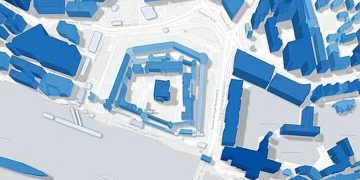
Web 3.0 arrived with promises for a more intuitive and more seamless online experience than its predecessors. By drawing on Artificial Intelligence (AI), blockchain technology, and edge computing, Web 3.0 has launched a new era of online experiences for people all over the world.
Web 1.0 was primarily based on content from large companies. Building on that, Web 2.0 allowed individual users to upload their own content. Web 3.0 takes this a step further, allowing online platforms to receive information from multiple sources and use this information to customize the user experience.
For example, in a Web 3.0 environment, when you’re shopping online, Amazon recommends products that people with similar profiles have bought. The platform also recommends products that other buyers bought along with the products you’re viewing. You get similar recommendations when you’re streaming content on Netflix. The platform recommends new shows and movies to you based on what is popular in your region as well as content you’ve rated positively in the past.
Let’s take a closer look at the aspects of Web 3.0 that make it stand out:
Artificial Intelligence
Leveraging artificial intelligence allows algorithms to study human speech more closely and offer more intelligent and more human responses to online searches. By combining semantics with natural language processing, Web 3.0 is a step closer to seamless online searches with relevant results.
Blockchain technology
Web 3.0 is built on blockchain technology to provide a decentralized environment with a level playing field. With decentralization, corporations no longer have a monopoly over all the data that is recorded online. Individual users have control over their data, with more privacy than ever before.
Edge computing
Edge computing ensures that when you’re using an online application, your data is processed faster and transactions are completed more smoothly. By drawing on edge computing, Web 3.0 has introduced an environment where online applications are more accessible and more efficient.
All these features of Web 3.0 combine to give us a more personalized experience online in an environment where our needs are met. With these features, we can look forward to increased connectivity of data, more efficient searches, more relevant marketing, and more effective communication.
At the same time, despite the numerous advantages of this new Web 3.0 environment, online assets are increasingly disconnected. This can be especially frustrating for developers who are building dApps online. After all, these dApps are normally blockchain-specific. As such, they rely on assets from that particular blockchain, which might have issues or vulnerabilities.
How DojimaNetwork is connecting blockchain-based assets for dApps developers
Many tools are being built to make the development and deployment of dApps easier. Among these is Dojima Network – a cross-chain infrastructure platform that acts as a middle ground between multiple layer-1 and layer-2 blockchains. In this way, Dojima Network provides developers the ability to build cross-chain applications.
Dojima Network serves as a middle ground where dApps developers from different ecosystems can meet and build scalable apps. By enabling dApps developers to leverage the liquidity and protocols from these different ecosysems, Dojima Network is powering a new generation of apps in Web 3.0.
How does Dojima Network facilitate dApp development?
When you’re developing a dApp, you normally have to be familiar with blockchain infrastructure and go through developer documentation before you can create an account. You also need to master a specific architecture and possibly even learn a new programming language so that you can build your app on a specific blockchain. You’ll then need to get the gas price for your transactions and submit transactions in addition to accessing transaction status and transaction history.
Dojima Network tackles these problems by providing Functionality as a Service (FaaS). More specifically, the platform provides a single API, a single doc, and a single place to develop dApps without any prior knowledge of blockchain. And the best part? Although you can leverage the liquidity and protocols from different blockchains, you don’t need to learn several programming languages or architecture.
What additional tools does Dojima Network offer developers?
The Dojima ecosystem comes complete with a suite of products to make development and deployment of dApps very easy. These include a cross-chain wallet, NFT features and exclusive rewards for holders of the platform’s native currency. With these features, developers can pool liquidity and assets from blockchains like Ethereum, Solana, Bitcoin, Binance, Cosmos, Polkadot and Arweave.
Let’s go over each of these features in detail:
- Cross-chain wallet
This wallet gives users the ability to manage both native and non-native layer-1 tokens in one place with just one seed phrase. The wallet also provides valuable information to token holders. These include: price trends (across your preferred timeline), 24-hour statistics for each layer-1 blockchain, transaction history for each leayer-1 chain, and variable gas rates (slow, average and fast gas rates) for each transaction. Each token’s dollar conversion is also easily accessible, without the need for manual calculation.
- NFT features
Dojima serves as a middle ground for NFT marketplaces. By setting up secondary NFT marketplaces, Dojima makes it possible for derivatives, tokens and NFTs from all major blockchains to flow into the ecosystem.
- Exclusive rewards for $DOJ token holders
$DOJ token is the native token of Dojima Network and the primary ecosystem currency. $DOJ is also the staking token for running a validator node. Dojima Network accepts all major cryptocurrencies, but holders of $DOJ can access lower gas fees and exclusive benefits on the platform.
Conclusion
Given that lack of interoperability is a problem commonly cited by dApps developers, Dojima Network has what it takes to offer a first-class dev experience. Dojima has given developers a platform where they can build cross-chain dApps and integrate dApps from other blockchains. With this platform, developers can interact with, build and deploy their dApps more easily than ever before while offering dApps users a more seamless user experience.
Thanks to Dojima Network, developers can leverage the best assets from existing blockchains and build supercharged dApps that not only do more but perform more efficiently.
Are you interested in building your next dApp on Dojima Network? You can plug into this cross-chain infrastructure platform here. You can also connect with the Dojima team on Twitter and Discord for more updates on upcoming features on the platform.





























